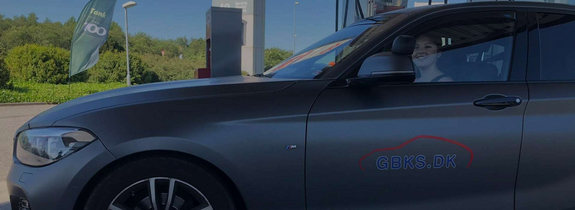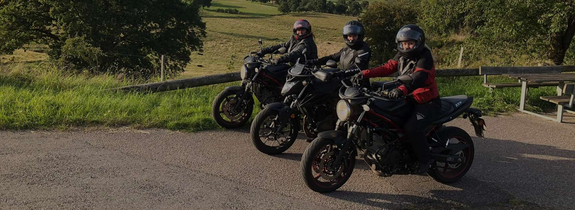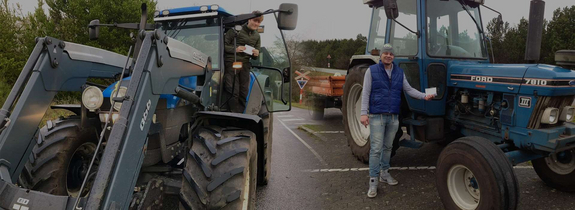Engine and Exhaust:
- The engine must be dry and sealed (not soiled with oil or leaking oil), and it must not emit black smoke.
- The exhaust pipe must be securely attached and should not have holes from the engine to the outlet. The exhaust must not produce unnecessary noise and black smoke.
- The oil level should be between the minimum and maximum marks. It can be checked using the oil dipstick or through a glass window on the side of the engine.
- Place the motorcycle on the center stand to keep it in an upright position.
- Unscrew and wipe the oil dipstick clean.
- Wait a few minutes to let the oil settle to the bottom.
- Screw the oil dipstick back in.
- Unscrew it again and check the oil level, which should be between the minimum and maximum marks.
- If there is a sight glass on the side of the engine, check the oil level when the motorcycle is in an upright position after approximately 2 minutes.
- If the motorcycle is liquid-cooled, this should also be checked. The location of the coolant reservoir varies, so refer to the motorcycle's manual, but the coolant level should be between the minimum and maximum marks when the engine is cold.
Chain and Sprockets:
- The chain must be well-lubricated.
- Driving in rainy weather can wash off chain oil much faster than normal, and the same can happen with aggressive riding.
- The chain should have a proper slack, which can vary from 1-2 cm to 3-4 cm. Refer to the manual for exact specifications.
- The chain kit (chain and both sprockets) should not be worn to the extent that when pulling the chain backward on the rear sprocket, you can see through the sprocket and chain.
Cables:
- All cables (throttle, clutch, and possibly choke) should be well-lubricated and should not be rusty or frayed (frayed means broken fibers in the inner cable).
Tires and Rims:
- Tires and wheel rims must be intact and undamaged.
- Both tires should have at least 1 mm of depth in the main tread pattern.
- Tires should be inflated to the correct pressure (refer to the motorcycle's manual). (IMPORTANT: Adjust tire pressure when riding with a passenger or carrying heavy cargo).
- Tires should be mounted with the correct rotational direction, indicated by an arrow on the tire's sidewall.
- If the rims have spokes, make sure they are correctly tensioned (you can check this by tapping them like guitar strings and ensuring that the sound is consistent for each set).
- Wheel bearings should not have wear or play. Check by gripping the wheel rim firmly and rocking it from side to side.
- Wheels should be securely fastened and locked with a split pin or locking bolt.
- The tire type should be the same for both front and rear, although it is permissible to have different tire brands on the motorcycle.
- Tires should not be more than 4 years old because the chemistry deteriorates, making them harder and less adhesive. Check the date marking with the DOT code, e.g., 3213, indicating week 32 of 2013.
Shock Absorbers/ Springs:
Check as follows:
- Front: Press down firmly on the handlebars with the front brake engaged. You should feel resistance from the front forks when pressing down, and when you release, your hands should come up faster than the handlebars (indicating the action of the springs).
- Newer motorcycles allow for adjusting the front spring hardness based on the rider's weight. This is an important adjustment to make when purchasing a new motorcycle.
- Rear: Perform a strong hop up and down on the seat and quickly stand up again. You should experience a jolt or impact on your back, and you should rise faster than the springs rebound.
- During the driving test, explain the above procedure while performing the check.
- Also, check for any oil leaks on the shock absorbers. It is normal to replace seals and oil in the front forks every 2-3 years.
- IMPORTANT: Adjust the rear spring and air pressure when riding with a passenger or carrying heavy cargo and readjust back to normal when such riding is completed. Refer to the motorcycle's manual for guidance.
Handlebar/ Steering:
- The handlebar must be easy, safe, and quick to operate.
- The handlebar must be at least 55 cm wide and may be raised a maximum of 30 cm above the seat but must not be lower than the seat.
- When turning the handlebar, there should be no strange noises, and the handlebar or hands should not come into contact with the tank or fairing at full lock.
- Check for play in the steering: Stand in front of the motorcycle and firmly place the front wheel between your knees. Grip the handlebar with your hands and turn it forcefully from side to side. You should experience total stiffness (play is indicated if there is any movement).
- The handgrips must be securely attached to the handlebar.
- At least 25% of the vehicle's weight must rest on the front wheel.
Headstock Bearings:
- The connection between the frame and the front fork is made through ball bearings called headstock bearings.
- This is a critical point that must not fail, so there should be no play or strange noises.
- Check this by turning the handlebar from side to side (no noises or resistance) and by verifying that the assembly is correct. To verify this, either push the motorcycle against a wall or pull the front brake while forcefully pushing forward in a squatting position. During this check, there should be no movement, play, or cracking noises.
Brakes:
The brakes must be able to stop the motorcycle quickly, safely, and effectively at all speeds and loads. When both brakes are applied, the motorcycle should be able to stop within 7 meters from 30 km/h.
There should be two separate brakes:
- A. Front-wheel brake = handbrake
- B. Rear-wheel brake = foot brake
In case one fails, the other acts as an emergency brake (some motorcycles combine the brakes like cars, where both brakes are activated with either the handbrake or foot brake - this is a simplified explanation).
IMPORTANT: Motorcycles do not have brake sensors. Therefore, you have a significant responsibility to check whether brake pads and discs are worn.
Rear Drum Brake:
- If the motorcycle has a rear drum brake:
- The linkage must not have any bends other than the original ones from the factory.
- The angle between the linkage and the brake arm must not be greater than a right angle when the pedal is pressed down.
- With the pedal fully depressed, the wear indicator (usually an arrow following the brake arm) must not extend beyond the minimum mark.
Foot Brake Control:
- If the rear brake is activated alone, it should be able to stop the motorcycle within 11 meters from 30 km/h.
- The brake pedal must have a non-slip surface.
- The brake pedal must not be loose or able to move from side to side.
- The brake pedal should feel firm and solid when pressed down.
- The brake pedal must only be able to depress 2-3 cm when fully pressed downward.
- The brake pedal must not sink under constant pressure.
- The brake pedal should have a slight free play before braking engages.
- Remember that both the brake pedal and gear shifter can be adjusted in height to fit your body size (usually done easily with simple tools, such as 8, 10, and 11mm spanners).
Front Brake Control:
- If the front brake is activated alone, it should be able to stop the motorcycle within 9 meters from 30 km/h.
- The brake lever must not be noticeably loose or able to move up and down.
- The brake lever should feel firm when pulled firmly.
- The brake lever can be pulled about 2/3 of the way towards the handlebar.
- The brake lever must not sink towards the handlebar under constant pull.
- The brake lever should have a slight free play before braking engages.
Brake Fluid:
- Check the level in the reservoirs. If it's a newer motorcycle, it will have separate reservoirs for the front and rear brakes.
- The fluid level should be between the minimum and maximum marks, with the reservoirs in a level position during measurement.
- Brake hoses should be undamaged and dry.
- Never top up with additional brake fluid (requires professional handling), and replace the brake fluid every two years.
Lights:
General requirements for lights:
- All light covers must be intact and clean.
- Lights must be approved (they should have an E approval code written on the glass).
- Bulbs must be correctly fitted in their sockets.
- All lights must be functional!
Position Light / Parking Light:
- White or yellowish light.
- Must be visible from at least 300 meters away.
- Must not blind oncoming traffic.
Dipped Headlight / Low Beam:
- White or yellowish light.
- Must illuminate the road for at least 30 meters.
- Must not blind oncoming traffic.
- Can be asymmetrically aimed to the right (not a legal requirement).
- The light beam must have a 1% downward slope.
- How to check a 1% slope: The motorcycle should be on a flat surface without the side stand. Stand close to the headlight and mark the upper edge of the light beam on a ruler or your pants leg. Step 1 meter away from the headlight, and now the upper edge of the light beam should have dropped by 1 cm.
Main Beam / High Beam:
- Minimum of 1 with white or yellowish light.
- Must illuminate the road for at least 100 meters.
- Can be dazzling (as it is only used when there are no other vehicles around).
- Must have a blue indicator light on the instrument panel.
Taillight:
- Minimum of 1 with red light.
- Must be visible from at least 300 meters away.
- Must not be dazzling.
Brake Light / Stop Light:
- Minimum of 1 with red light.
- Must shine significantly brighter than the taillight.
- Must not be dazzling.
- The brake light must be activated separately by either the handbrake or foot brake.
Reflector:
- Must be red and mounted at the rear.
- Must be approved (CE, SiS, or similar).
- Must not be triangular.
- It is allowed to install orange reflectors on the sides and a white reflector on the front.
Number Plate Light:
- There must be at least 1.
- Must have white light.
- The light must be strong enough to read the license plate from at least 20 meters away.
Indicators / Turn Signals:
- There must be 4.
- Yellow or orange light.
- Must be visible in sunlight.
- Must blink 60-120 times per minute (1-2 times per second).
- The front turn signals must have a distance of at least 30 cm, and the rear turn signals must have a distance of at least 24 cm.
Hazard Lights:
- Not a requirement on motorcycles. The button should be identifiable (usually red with a triangle symbol).
Daytime Running Lights (DRL):
(Not part of the driving test questions).
In new motorcycles, daytime running lights are automatic (some with LED lights). However, some motorcycles may use low beams or fog lights as daytime running lights.
In some motorcycles, only the front lights are activated as daytime running lights, leaving the rear with no light.
It is, therefore, crucial for the rider to be aware of the lighting conditions and use the correct lighting settings (switch to low beam/high beam on the light switch when:
- the sun has set until it rises,
- in fog,
- in mist,
- in rain,
- in snow.
Extra Lights:
- Pair of additional stop lights, fog lights, and daytime running lights are allowed.
- An extra low beam light and/or high beam light can be mounted in the center vertically on the motorcycle.
Horn:
- The horn must have a loud and constant tone (the button is usually on the left side of the handlebars).
Documents:
- In Denmark, you only need to carry the Registration Certificate if you are riding with a sidecar or trailer.
- In foreign countries, you must always carry the original Registration Certificate.
Warning Triangle and Yellow Safety Vest:
- In case of a breakdown/accident with a motorcycle with a sidecar, the warning triangle must be placed behind the motorcycle,
- A, 50m on regular roads, and
- B, 100m on highways.
- Always carry at least one yellow safety vest (a requirement in many countries).
- It is advisable to activate the hazard lights along with the use of the warning triangle if the motorcycle has them.
Mirrors:
- Mirrors must be clean, intact, and correctly adjusted. It is normal for mirrors to become blurred due to engine vibrations at certain RPMs.
Frame and Handlebars:
- The handlebars must be at least 55 cm wide, and the handlebar grips must not be more than 30 cm above the seat.
- The handlebars must be easily turned from side to side and must not touch the tank or fairing.
- There must be no sharp parts on the frame (that could cause injury in an accident).
Fairing / Windshield:
The windshield must not be higher than that the rider can easily see over it and all the way down to just 10 meters in front of the motorcycle. If this is not met, the motorcycle must be equipped with windshield wipers and washer.
Towing a Motorcycle with a Sidecar:
- The distance between the towing vehicle and the motorcycle with a sidecar must not exceed 4 meters.
- If the distance is over 2 meters, the center must be marked with, for example, a cloth or bag.
- Speed must not exceed 30 km/h.
- Towing is not allowed on motorways.
- Towing a motorcycle without a sidecar is not allowed.
Passengers and Cargo:
- The rider is responsible for the passenger to wear a helmet and will be fined if the passenger is under 15 years old. Children up to 135 cm must sit in a designated Motorcycle child seat.
- Cargo must not extend more than 15 cm beyond the motorcycle's widest point - the mirrors.
- If the cargo extends more than 1 meter beyond the front or rear of the motorcycle, it must be marked with something, which can be anything from an empty bag, a bra to a t-shirt.
- When riding with heavy cargo or a passenger, it is essential to adjust the tire pressure and rear suspension - and adjust back when normal riding resumes. Read the manual.
- When riding with a passenger and cargo, the center of gravity shifts backward and upward, which affects the motorcycle's handling and increases the braking distance.
- Top box should ONLY be loaded with about 5 kg of cargo.



